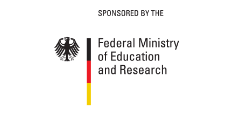
Workshop: An Introduction to Anatomy Ontologies - 2019
Synopsis
This workshop is a brief introduction for researchers that are interested in formalizing how they formally represent the anatomy they study. Around half the content will cover what ontologies are, and how they can be used, the other half will focus on what concerns and issues arise when referencing anatomy in ontologies. The focus will be on existing ontologies and tools rather than future theoretical avenues, though resources of this type will be mentioned. The skeletomuscular system of arthropods will be used as an example. The workshop will be interactive, though most interactions will be discussion-based rather than tool based tutorials, this is a reflection of the available time. An honest, experienced appraisal of the pros-and cons of using ontologies for morphological research will be the cornerstone for discussion and questions. The workshop will be lead by Drs. István Mikó and Matt Yoder.
Logistics
VenueZoological Research Museum Alexander Koenig (ZFMK), Seminarraum (seminar room), Adenauerallee 160, 53113 Bonn, GermanyStart8th of May, 9amEnd8th of May, 4pmRequirements;Participants will need their own laptop with the software listed below installed before the workshopRegistration
Email to p.grobe [at] leibniz-zfmk.de or to lars.m.vogt [at] googlemail.com;
no registration fee applies
Reference to a follow-on workshop: On 9th to 10th of May, a workshop on "Semantic Data Models in Anatomy" will be held at the same venue (see: https://bonn.leibniz-lib.de/en/research/workshop-semantic-data-models-in...).
Target Audience
Researchers, or upper-level undergraduate to graduates whose research contains some component of morphology. No technical (computer/software) knowledge is required, though note that using ontologies is a technical exercise. Our overview will be conceptual rather than a deep dive.
Syllabus
What is an Ontology? (what)
What is/not an ontology? Should you use ontologies? Why/not? Basic concepts: classes, instances, relationships (object properties), orthogonality, true-path, labels, URIs. Ontology formats, languages and syntaxes.
Anatomy and ontologies (why)
How ontologies are currently being used in current morphological research. Benefits. Design considerations: hierarchies and granularity. Best practices- definitions, reuse. Taking small steps: many vs. few relationships.
Building and Curating ontologies - Software and Tools (how)
Building ontologies piecemeal, or extracting them automatically. Author driven vs annotator based ontologies. Ontology editors (OBO Edit. Protégé. Mx. Web-Protégé). An example ontology: skeletomuscular system of the insect thorax.
Formalizing morphology descriptions: from simple annotation to formal descriptions - (why and how)
Concepts for re-use and integration with tools such as Onto-fox and Noctua. Class based vs instance based formal descriptions. Manchester syntax.
Using ontologies as knowledge bases (when)
HAO, OaRCS. Flybase. Phenoscape. Quantitative analyses.
Community resources (who)
Listservs, tools, meetings. Other ontology courses, tutorials. Other experts creating and modifying ontologies. Next steps.
Software
Please have the following software install and/or visit websites prior to the workshop






